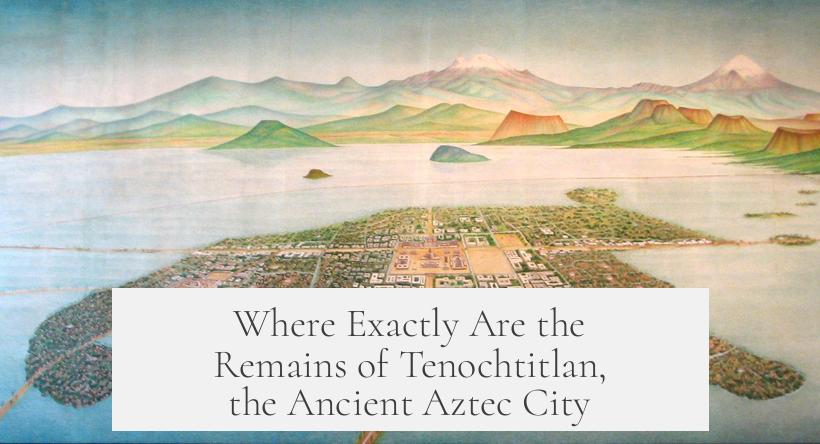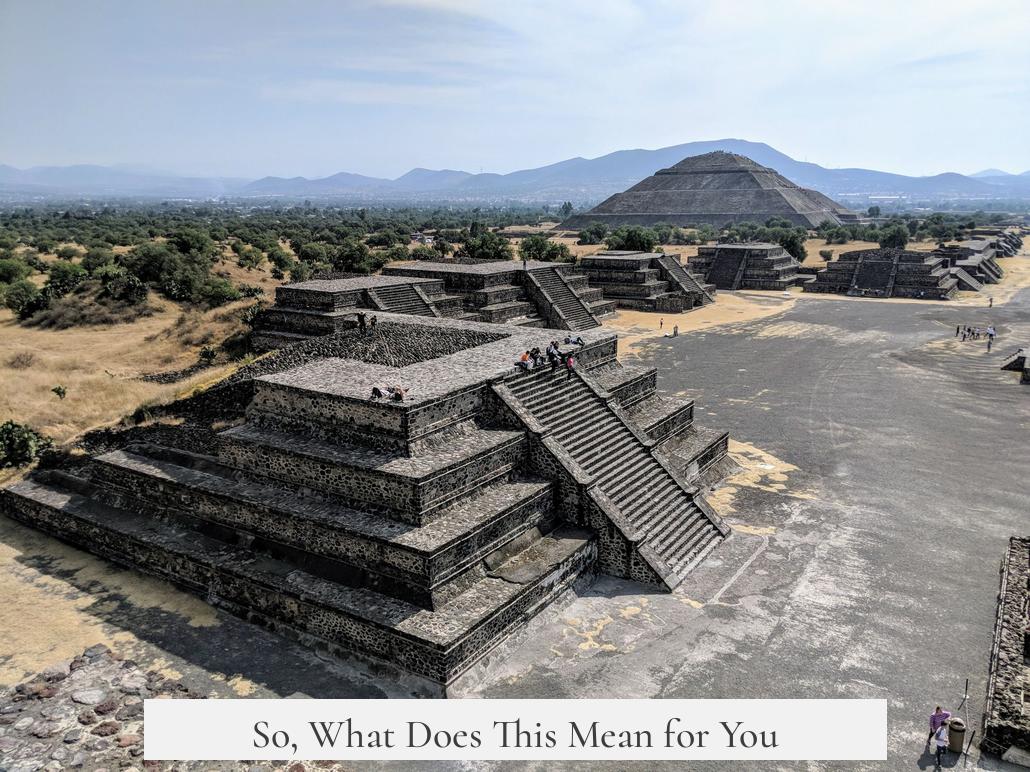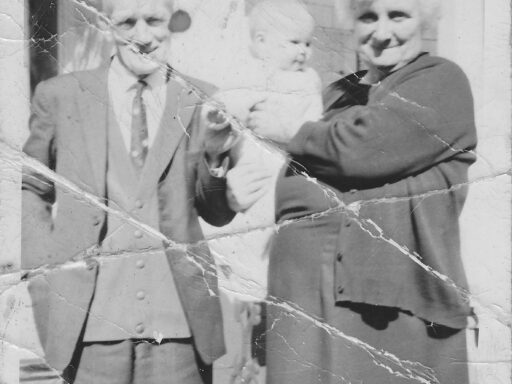The current remains of Tenochtitlan, the ancient Aztec city, are primarily located underneath modern Mexico City, with key archaeological sites and relics scattered throughout the capital.
Mexico City stands directly on top of what was once Tenochtitlan. The Aztec city was built on an island in Lake Texcoco, much of which was reclaimed and filled in during Spanish colonial times. Stones from Tenochtitlan’s temples and buildings were reused extensively, including for major constructions like the Mexico City Cathedral situated at the city’s center.
Important ruins remain near the city’s main square, the Zócalo. The Templo Mayor, the great Aztec pyramid, was rediscovered after a 1987 earthquake during cleanup efforts. It is now a protected archaeological site and forms part of the Plaza of the Three Cultures, symbolizing the layers of Mexican history.
Lake Texcoco once surrounded Tenochtitlan, but today, only traces remain. The small lakes visible around Mexico City are remnants of the original lake system. One of the best-preserved aquatic landscapes is Xochimilco, south of the city, which features canals and chinampas—floating gardens that exemplify how the Aztecs farmed on water.
Most of the lake’s water is now underground, flowing through old aqueducts and pipes beneath the city. Mexico City is gradually sinking due to the soft, water-saturated ground beneath it.
Additional historic sites linked to Tenochtitlan include the Basilica of Our Lady of Guadalupe, built on the temple foundations dedicated to the Mother Goddess Tonantzin. Stone from the original temple was incorporated into the current church’s construction.
Noteworthy discoveries include the Aztec stone calendar found during metro construction in the early 20th century, highlighting the rich underground heritage beneath Mexico City’s streets.
| Location | Significance |
|---|---|
| Zócalo (Major Plaza) | Ruins of Templo Mayor and main Aztec city center |
| Plaza of the Three Cultures | Archaeological park showing Aztec, colonial, and modern Mexico |
| Xochimilco | Remaining lake canals and chinampas representing Aztec agriculture |
| Basilica of Our Lady of Guadalupe | Built on temple foundations of Mother Goddess Tonantzin |
- Mexico City covers the original Tenochtitlan site.
- Many original Aztec stones were reused in colonial buildings.
- Templo Mayor ruins lie near the Zócalo.
- Xochimilco preserves some aquatic features of Lake Texcoco.
- Underground water and structural issues affect the sinking city.
- Archaeological finds continue during city development projects.
Where Exactly Are the Remains of Tenochtitlan, the Ancient Aztec City?

So, where is Tenochtitlan today? Right underneath Mexico City. Yes, the bustling, sprawling capital of Mexico stands directly atop what once was the magnificent Aztec city of Tenochtitlan. This ancient metropolis, built on Lake Texcoco, now rests beneath a modern urban jungle filled with concrete, traffic, and commuting chaos.
It’s a wild thought. The stones that once crafted grand temples and palaces have been repurposed to build Mexico City itself. Weirdly practical, right? When the Spanish arrived in the 16th century, they tore down much of Tenochtitlan and used its materials to construct new buildings. For example, the impressive cathedral that dominates the city’s Zócalo (main square) is partly built from stones ripped directly from Aztec temples.
So, understanding where the remains of Tenochtitlan lie means knowing where Mexico City begins — right on top of it!
Ruins Peek Out Near the Heart of Mexico City
If you visit Mexico City, don’t miss the Templo Mayor. This major archaeological site lies just near the Zócalo, the central plaza that was once the heart of Tenochtitlan. Excavations there uncovered the ruins of the main Aztec pyramid and surrounding structures. It’s now part of a museum complex where you can explore Aztec artifacts and see the foundation stones of structures that shaped a civilization.
An earthquake in 1987 played an unexpected role in revealing more history. During cleanup efforts, workers stumbled upon an ancient pyramid and plaza of the old city. This discovery is now preserved within the Plaza of the Three Cultures, a spot symbolizing Mexico’s complex heritage blending pre-Hispanic, colonial, and modern elements.
The Vanishing Lake Texcoco and the Floating Gardens of Xochimilco
Tenochtitlan stood originally on an island in Lake Texcoco. Today, that lake is mostly gone because it was filled in to support the growing city. Zoom out on a map of Mexico City, and you’ll spot tiny remnants of what was once a vast lake system. Most of the surface water disappeared over centuries, buried under urban sprawl.
The rare exceptions are the canals and chinampas of Xochimilco — the last visible remnants of the old lake. These floating man-made gardens show how the Aztecs ingeniously farmed in watery surroundings. Visiting Xochimilco today gives a rare glimpse into how the ancient city’s environment looked, complete with vibrant waterways and green patches of agriculture.
Water, Water Everywhere – But Mostly Underground

Here’s an ironic twist. While the lake is largely long gone, much of the water still lurks underground. Mexico City is essentially sinking day by day because it’s built on soft lakebed sediments and aquifers that cities have drained for decades. The groundwater is drained through a complex system of aqueducts and pipes, many aging and fragile.
This underground water presence means the city’s foundations rest on what was once the watery heart of Tenochtitlan. It’s a silent reminder of the past beneath the bustling surface.
Basilica of Our Lady of Guadalupe: An Unexpected Connection
You might not expect a famous Catholic basilica to hold ties to Tenochtitlan, but the Basilica of Our Lady of Guadalupe does just that. It’s built over the former temple to Tonantzin, the Aztec mother goddess.
Even more fascinating, many stones used for part of this basilica came from Aztec ruins, linking modern religious worship directly back to pre-Hispanic spiritual sites. Such a layered history offers both religious and cultural continuity right where ancient and modern worlds meet.
The Aztec Calendar Stone’s Surprising Metro Ride
Sometimes, relics pop up in the most unexpected places. The giant Aztec stone calendar, often called the Sun Stone, was discovered in the early 20th century during metro tunnel construction. Imagine digging for public transit and uncovering a priceless piece of history!
This discovery emphasizes how Mexico City is literally layered over the past. With every new building or metro expansion, remnants of Tenochtitlan can resurface, connecting modern urban life to the ancient city that once thrived.
So, What Does This Mean for You?

If you find yourself puzzled about where the remains of Tenochtitlan are located, here’s the simple answer: they’re all around and beneath Mexico City. The very streets you walk on, the grand plaza you visit, even some famous religious sites, contain stones, ruins, or memories from the mighty Aztec capital.
Next time you wander Mexico City, remember you’re treading on layers of history. The ancient city didn’t vanish—it evolved, got buried, and became part of one of the largest and most vibrant capitals in the world.
Want to see Tenochtitlan’s remains firsthand? Head to the Templo Mayor archaeological site near the Zócalo, explore Xochimilco’s canals, or visit the Plaza of the Three Cultures. Each spot offers a different slice of that old city’s life, right beneath the modern hustle and bustle.
Have You Ever Thought About How Cities Literally Hide Histories? Tenochtitlan’s story under Mexico City shows how ancient civilizations live on beneath us, waiting to be rediscovered.
Where exactly are the remains of Tenochtitlan found in modern Mexico City?
The ruins of Tenochtitlan lie beneath Mexico City. Key archaeological sites, like the Templo Mayor, are near the Zocalo, the city’s main plaza. Parts of the ancient city appear as protected ruins and parks.
How did Mexico City’s construction affect the original Tenochtitlan structures?
Mexico City was built using stones taken from Tenochtitlan’s temples and buildings. The ancient city was dismantled, and the lake it sat on was mostly filled in to create the modern metropolis.
What are some visible reminders of Lake Texcoco and Tenochtitlan today?
The last remains of Lake Texcoco include the canals and floating gardens of Xochimilco. These give an idea of how parts of the Aztec city around the lake once looked.
Are there underground remains or water from Tenochtitlan beneath Mexico City?
Much of the water from the old lake exists underground now. Mexico City is slowly sinking into this soft, water-rich ground. Ancient water systems still influence the city’s foundation.
What important Aztec artifacts have been discovered during Mexico City’s development?
Several key finds happened during construction projects. Notably, the giant Aztec stone calendar was uncovered in the early 20th century while digging a metro tunnel.




